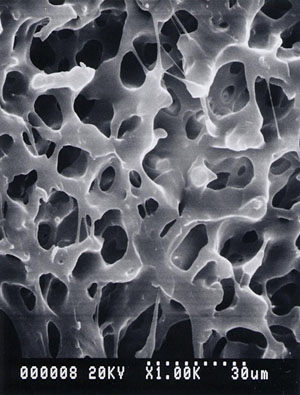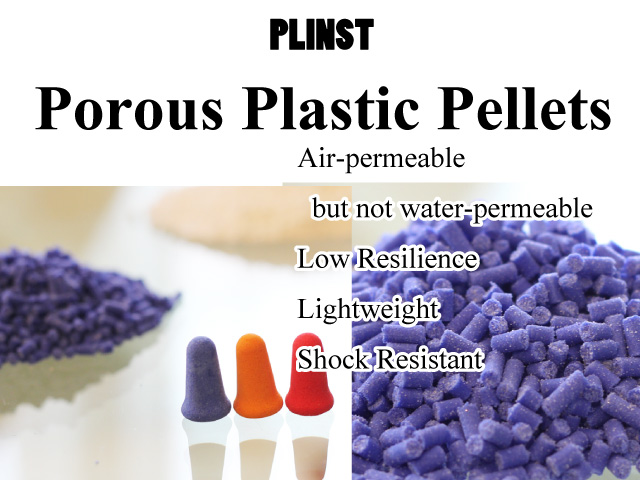Welcome to the PLINST web site. Here, we mainly introduce our products, porous materials by Injection Molding as well as Extrusion Molding.

The dechlorination method and powder sintering method are techniques for obtaining continuous open-cell structure substances; however, these conventional methods are applicable only to a few specific resins, and only simple shapes can be molded using these techniques.
Using the manufacturing engineering which we have developed, it has become possible, for the first time, to carry out injection molding to create continuous open-cell structure versions of engineering plastics with excellent mechanical strength and other useful characteristics, as well as with general-purpose plastics, with a void ratio of over 60%.
- This new engineering technique has the potential for processing thermoplastic continuous open-cell structure substance by means of injection molding or extrusion molding.
A water-soluble organic chemical in powder form is mixed in advance with the plastic and the bubble-generating substance. After molding, it is immersed in a hot water bath, and the chemical eluted, to obtain continuous open-cell structure substances.
- It is possible to adjust the void ratio (also called the "Porosity") to a preselected level of between 60-80%.
- We have proved that many plastics, including polyethylene, polypropylene, ethylene-vinyl acetate (EVA), ABS, polyacetal, polyurethane, polyethylene terephthalate, and polyethylene base elastomer, are amenable to this porosity-inducing treatment using injection molding techniques.
In addition to these plastics, resins which can be molded at temperatures up to 230°C are thought to be suited to the technique we have developed.
- The dechlorination method and powder sintering method have been conventionally used to obtain continuous open-cell structure substance; however, such methods can be used to mold only simple geometrical shapes such as columns, discs, plain sheets, etc. and few plastics are amenable to this treatment.
We regard the manufacturing engineering technique which we have developed, which also allows a broader range of materials to used, as having great potential.
- The material functions expected at present include "Air-permeable but not water-permeable", "Rigid but lightweight", and "Lightweight but shock resistant" substances
- Other potential characteristics include the function of preventing the passage of liquids such as lubrication oil, ink, etc. and as filtering materials.
These methods are thought to be applicable to entirely new fields by selecting different materials.
Keywords: sponge, porosity, lightweight, filter, air permeability
The engineering technique which we have developed breaks new ground. It is also open to major future developments through the improvement and development of different materials.
Since this technique is virtually unique, we hope to develop new products jointly with an enterprise possessing top-class application development capability, product design engineering, and product evaluation engineering, since we are in possession of the necessary injection molding techniques engineering and plastic mixing engineering skills.
We have already been entrusted with research into methods to produce earplugs using a thermoplastic elastomer. This engineering seed has been developed through the process of research and development.
When applying for our patent, therefore, we submitted it jointly with an entrusted manufacturer and resin maker who cooperated with us in its development. However, there are no obstacles to forming a development alliance with another company.
(In this case, disclosure will be necessary.)



 The dechlorination method and powder sintering method are techniques for obtaining continuous open-cell structure substances; however, these conventional methods are applicable only to a few specific resins, and only simple shapes can be molded using these techniques.
The dechlorination method and powder sintering method are techniques for obtaining continuous open-cell structure substances; however, these conventional methods are applicable only to a few specific resins, and only simple shapes can be molded using these techniques.